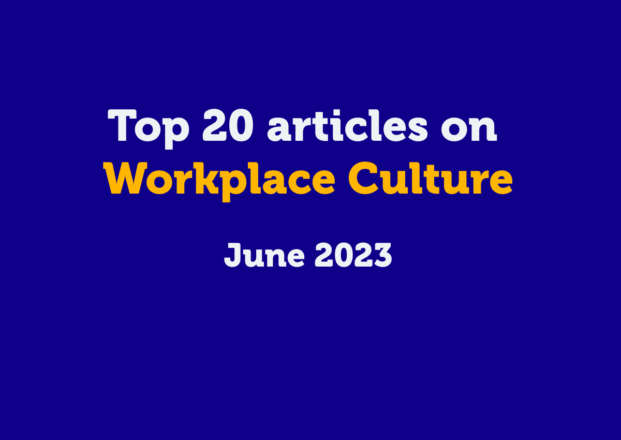
20th November 2023
Guest Blog: It’s time to rethink your employee listening strategy

This guest blog is written by David Bellamy, Founder & CEO of Harkn, the real-time employee voice platform.
A lack of effective listening is at the root of the current employee disengagement crisis.
Year after year, Gallup tell us that people are still not engaged at work. In fact, the picture is looking worse than ever, despite decades of effort and investment from companies.
So, how can you tackle such a mammoth issue? This question is already the topic of countless articles and scholarly papers, but we’re going to try and answer it in one article.
In fact, we’re going to go as far as to say you can solve all the above issues and many more by doing one thing really, really well:
Listening.
How do you listen?
When we pose this question to leaders, they mention a host of different mechanisms.
They’ll talk about things like MBWA (Management By Walking Around), ‘Breakfast with the Board’, ‘Ask Me Anything’ or – our personal favourite shared by the CEO of a well-known beer company – ‘Beers with the CEO.’
The conversation then inevitably moves on to the employee engagement survey, which is used in a staggering proportion of firms.
Again, surveys have their role to play in employee listening.
All the tools and methods mentioned above contribute in some way to understanding your employees, and what’s going on on the frontline of your business.
Periodic surveys attached to an award saying how great your company is can be seductive. Just as it can be tempting to believe that when you walk around the office as a senior leader, you experience the workplace in the same way everyone else does.
But we need to move beyond vanity, and accept a few hard truths:
- The further up an organisational ladder you are, the harder you’ll find it to hear the truth. Messages get finessed, and a near revolt on the shop floor ends up sounding like a minor grumble by the time it reaches the CEO.
- Few people have the courage to speak truth to power. It doesn’t matter how good, kind, and caring a leader you are – power distance prevents many from coming forwards.
- We seriously overestimate our ability to read the emotions of others. The old adage ‘we hide what we feel and fake what we don’t’ continues to hold truth today. Don’t mistake smiling faces for satisfied employees.
- Fear of retaliation is real, and ‘better safe than sorry’ is still the preferred route in most companies. Leaders don’t hear about things until it’s too late, because employees fear the consequences of speaking up.
Where current strategies fall short
There’s a lot we want to know about at work, especially as leaders, and most of it can only come ‘from the horse’s mouth’ – i.e., directly from our employees.
Yet nearly all of our traditional channels either miss these insights completely or give us the information far too late for us to be able to act effectively.
Speed of insight is essential.
In today’s increasingly uncertain and unpredictable world, organisations are realising that there simply isn’t time to indulge in leisurely sensemaking, followed by slow strategic planning, drawn out decision-making, and delayed action-taking.
By the time we actually reach decisions, the world has moved on and rendered those decisions obsolete.
It’s surprising, then, that this is exactly how the majority of firms operate. Periodic data collection, central collation and analysis, and top-down decision-making – “you said, we did.”
People are reluctant to share their feedback and experiences with their leaders, because most of what we share is ignored or the response is so delayed that the issue at hand has changed.
It’s time to do things differently.
Future-fit employee listening
Harkn helps businesses to hear more of what matters by giving their people a voice and a safe space to use it.
It’s taken us a long time to get to this point, so here are four key things we’ve learned along the way:
- Capture things as they happen
If you want to get an understanding of day-to-day life in your organisation, you need to operate in the real world on a day-to-day basis. That means capturing experiences as they happen, not asking people about them days or weeks later.
Developing the capability to capture real-time insights gives a more accurate picture of life in your organisation and opens up critical opportunities to take action.
- Establish psychological safety
Without psychological safety, you can’t hear the truth from people in the workplace.
At Harkn, we believe the only way organisations can truly operate with psychological safety is through total anonymity. Your listening mechanisms must reflect this to be effective.
Anonymity should be celebrated as a strength, not a weakness, in your culture. When you strip away all identifiers from a person when soliciting their feedback, you create the conditions for equal voice. That’s a major milestone for everyone pursuing inclusion.
- Decentralise control with transparency
Employee voice should be anonymous, but it should also be transparent.
We’re all used to being asked questions and never seeing the results until they’ve been analysed by management, but it’s time for a shift.
Firstly, no trust or growth comes from keeping things a secret from your employees until they’ve been vetted by leadership.
Secondly, we all know that sustainable change comes from those it affects, not their bosses.
Close the feedback loop by making information available immediately, creating the conditions for faster sensemaking, decision-making, and action-taking.
- Make a loud and clear commitment
For any organisation looking to strengthen its listening strategy, the biggest obstacle is likely to be getting your people to believe you’re going to listen to them.
Listening is a two-part process:
- Getting your employees to use their voices
- Ensuring those voices are listened to and feel listened to
Ensuring an employee feels heard can be as simple as acknowledging what they’ve shared and thanking them for it.
Ensuring democratic listening might begin with setting up an employee listening group who are responsible for making sure everyone is heard and sharing their views with leadership regularly.
The takeaway?
The world has changed. The way we work has changed. What it takes to be a great employer or manager has changed.
You need to be able to understand and respond to your employees’ needs and feedback in more natural, collaborative, and iterative ways.
Seek opportunities for people to shape their own future, listen carefully, and adjust the conditions accordingly.
It’s time to make employee listening a core cultural value in your workplace.
#HowDoYouHarkn?
For further reading on employee voice, organisational sensemaking, psychological safety, and much more, visit Harkn’s blog: News, views, and insights (harkn.com)





